Saggubiyyam Payasam, also known as Sabudana Kheer in other parts of India, is a popular dessert in Indian cuisine, widely prepared during festivals, fasting days, and special occasions. It is made primarily from sago pearls (Saggubiyyam), milk, sugar, and cardamom, serving both as a delectable sweet dish and an energy booster.
The origins of this dessert are tied to the versatile use of sago in Indian culinary traditions, where it’s appreciated for its cooling properties and ease of digestion, making it a preferred choice during fasting (vrat) days. Sago pearls, extracted from the pith of tropical palm trees, become translucent and soft when cooked, offering a unique texture that’s both appealing and satisfying.
Creating Saggubiyyam Payasam involves carefully simmering soaked sago pearls in milk until they achieve a soft, gooey texture. The milk thickens to a creamy consistency, enriched with the flavors of cardamom, saffron, or rose water, depending on regional variations and personal preferences. Ghee-roasted nuts and raisins are often added to the payasam, introducing an element of crunch and richness to the dish.
Saggubiyyam Payasam Recipe
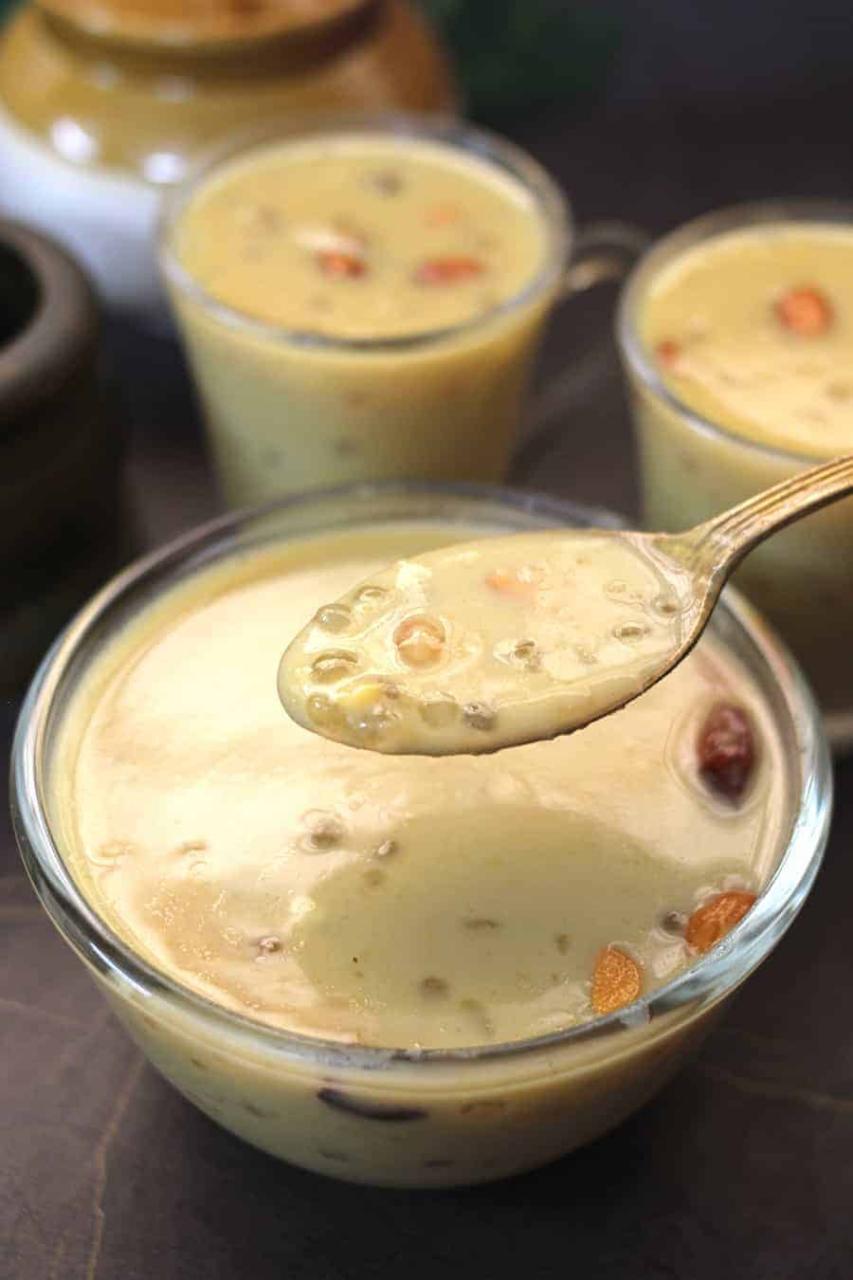
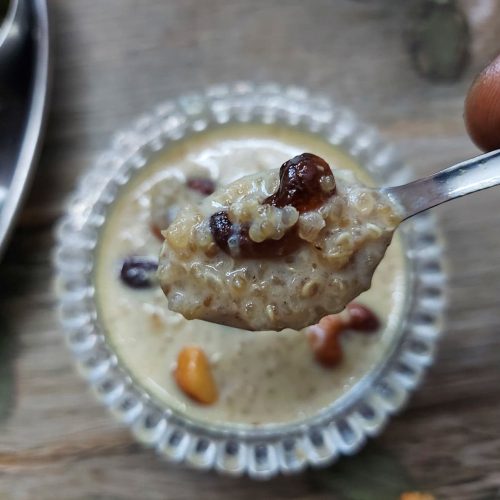
Saggubiyyam Payasam
Equipment
- 1 large bowl
- 1 heavy-bottom medium saucepan
Ingredients
- 1/2 cup tapioca pearls rinsed twice with cold water, drained
- 4 cups reduced-fat milk
- 1/4 cup condensed milk
- 3/4 cup sugar
- 1 teaspoon ground cardamom
- 2 teaspoons ghee
- 10 raisins
- 10 cashews
Instructions
- In a large bowl, combine the tapioca with enough cold water to cover by 2 to 3 inches. Let soak at room temperature for 2 hours. Drain.
- In a heavy-bottom medium saucepan over medium heat, bring the reduced-fat milk just to a boil. Just as small bubbles start to form in the milk, stir in the tapioca. Reduce the heat to low and cook the tapioca for 7 to 8 minutes, stirring every 2 to 3 minutes, until soft and shiny.
- Stir in the condensed milk, sugar, and cardamom. Cook for about 5 minutes, until the sugar is dissolved.
- In a small skillet over medium heat, melt the ghee.
- Add the raisins and cashews. Roast for about 1 minute until they are browned. Stir them into the pudding. Serve warm.
Notes
Cooking Tips about Saggubiyyam Payasam
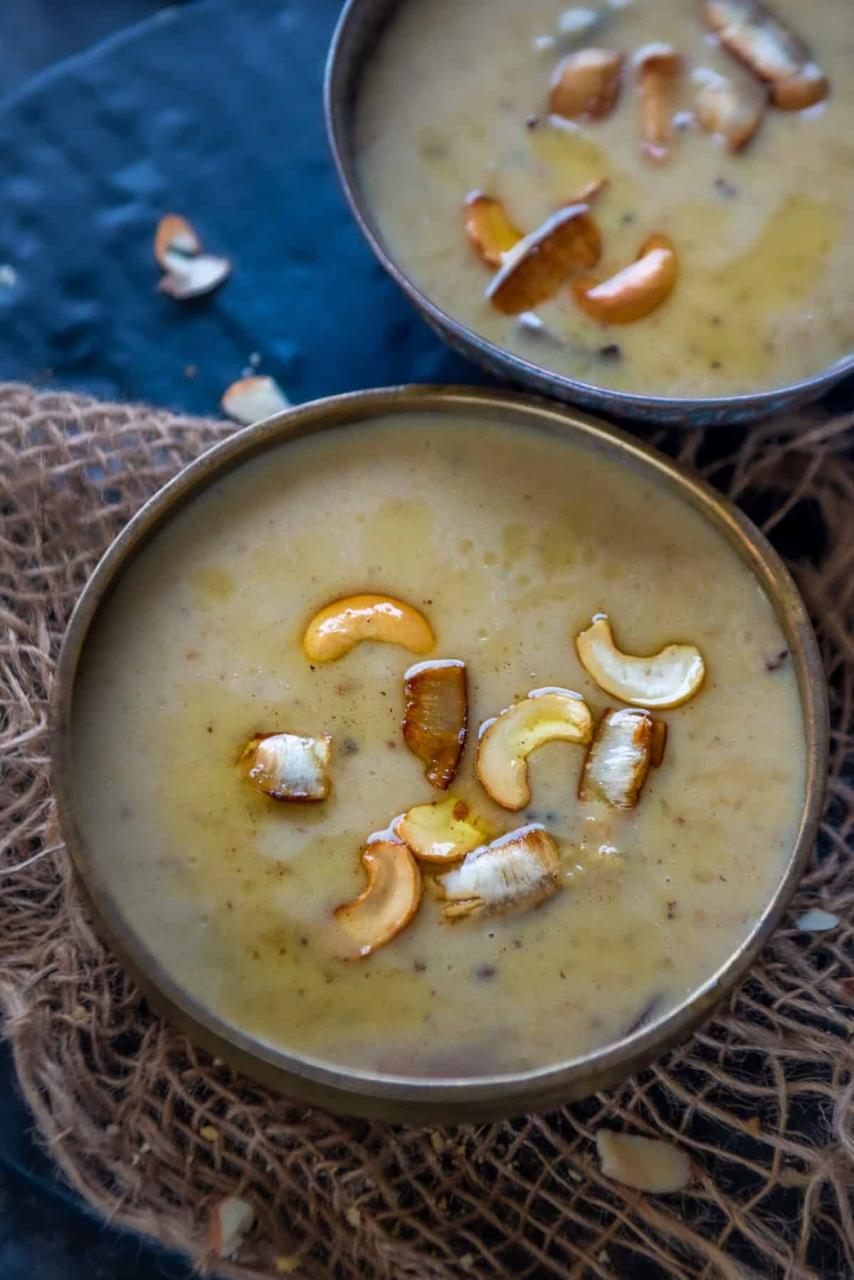
- Right Selection of Sago Pearls: Choosing the correct type of sago pearls (Saggubiyyam) is crucial. For Payasam, small to medium-sized pearls work best as they swell up nicely and provide a good texture without becoming too mushy.
- Soaking is Key: Soak the sago pearls for at least 30 minutes before cooking. This helps in reducing the cooking time significantly and ensures that the pearls cook evenly and puff up well.
- Use a Thick-Bottomed Pan: Cooking Saggubiyyam Payasam in a thick-bottomed pan prevents the milk from scalding and sticking to the bottom. Consistent heat distribution also allows the sago pearls to cook uniformly.
- Stir Continuously :Once you add the sago pearls into the boiling milk, it’s important to stir the mixture continuously. This prevents the pearls from clumping together and sticking to the bottom of the pan.
- Adjust the Sweetness: The amount of sugar can be adjusted according to taste. Remember, the sago pearls do not have much flavor on their own, so the sweetness comes primarily from the sugar or sweetener you choose to use.
- Flavor with Cardamom and Nuts: Crushed cardamom pods added towards the end of the cooking process infuse the Payasam with a fragrant aroma and taste. Ghee-roasted nuts and raisins add a wonderful texture and richness. Opt for cashews and almonds for their crunch and visual appeal.
- Monitoring Consistency: The Payasam tends to thicken as it cools down. If you prefer a thinner consistency, consider adding a little more milk towards the end of the cooking process. For a creamier texture, let it simmer longer, but keep an eye on it to avoid over-thickening.
- Experiment with Flavors:Though traditionally flavored with cardamom, you can experiment with saffron, rose water, or even a dash of vanilla extract to bring a different flavor profile to your Payasam.
- Serve Warm or Cold: Saggubiyyam Payasam can be served either warm or chilled. The serving temperature can change the taste and experience of the dish, so consider trying it both ways to see which you prefer.
Serving suggestions about Saggubiyyam Payasam
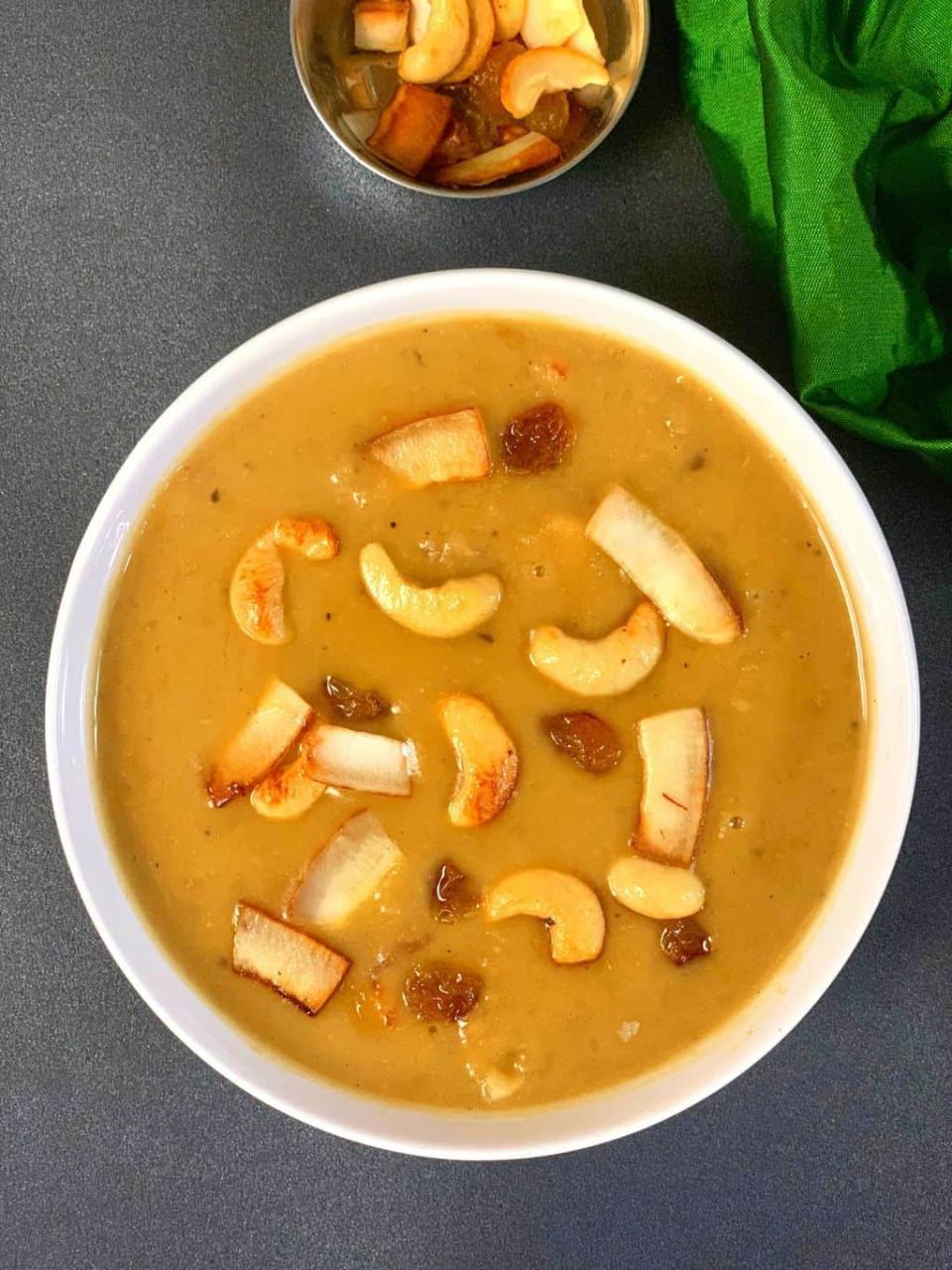
- Temperature Variations: Like many Indian desserts, Saggubiyyam Payasam can be served both warm or cold. Serving it warm is particularly comforting during cooler weather or rainy days, adding a cozy element to your meal. On the other hand, offering it chilled makes for a refreshing end to a summer meal or after a spicy main course.
- Garnish and Toppings: To add visual appeal and textural contrast, consider garnishing your payasam with ghee-roasted nuts like cashews, almonds, and raisins just before serving. A sprinkle of saffron strands or powdered cardamom can also elevate the aromatic experience of the dish.
- Serve in Traditional Utensils: For an authentic and immersive experience, especially during festivals or special occasions, serve the Saggubiyyam Payasam in traditional Indian utensils, such as brass or copper bowls. This not only looks appealing but may also add a subtle flavor enhancement to the dessert.
- Pairing with Meals: In a traditional setting, Saggubiyyam Payasam is often served towards the end of a meal. It beautifully complements savory dishes, balancing out the flavors. In a more modern context, you could pair it with lightly spiced rice dishes or flatbreads to mix and match textures and tastes.
- Accompaniments: While Saggubiyyam Payasam is delightful on its own, it can also be paired with a side of light crackers or savory snacks to offset its sweetness. Alternatively, serve it after a course of fruits to cleanse the palate and prepare for the creamy richness of the payasam.
- Presentation Matters: The presentation can significantly influence how a dish is received. Serve the payasam in elegant glassware or ceramic bowls to make each serving special. For a creative touch, layer the payasam with a dollop of whipped cream or a scoop of vanilla ice cream for a fusion dessert that will surprise and delight your guests.
- Beverage Pairing: After enjoying the payasam, offer your guests a light beverage like masala chai, herbal tea, or warm lemon water. This helps in digestion and refreshes the palate, especially after indulging in the rich, sweet flavors of the payasam.
Top 5 FAQs about Saggubiyyam Payasam
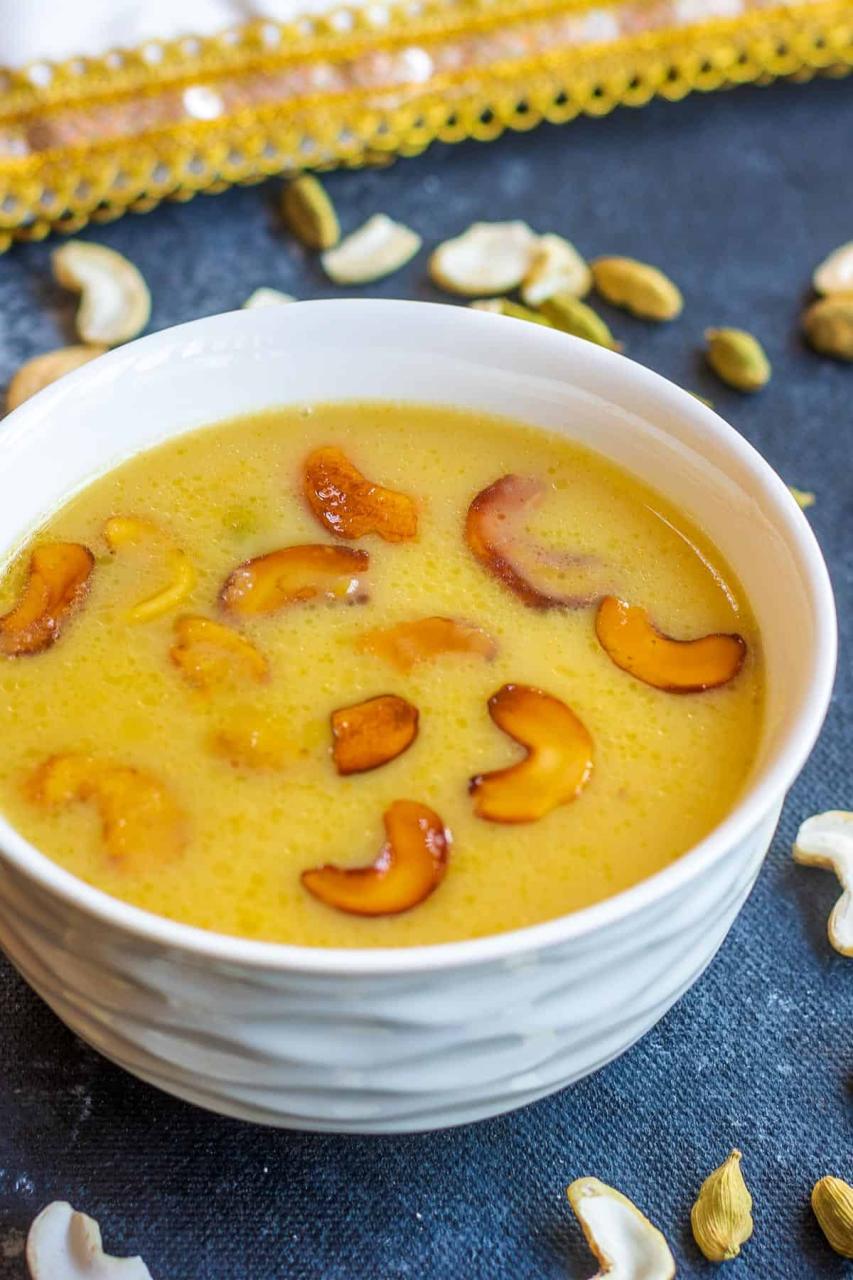
- What is Saggubiyyam Payasam? Saggubiyyam Payasam, known as Sabudana Kheer in some regions, is a sweet dessert made primarily from sago pearls (Saggubiyyam), milk, sugar, and cardamom. It is widely prepared during festivals, fasting days, and special occasions across India, serving both as a delicious sweet treat and an energy booster.
- How does Saggubiyyam Payasam differ from other Indian sweets? One of the key differentiators of Saggubiyyam Payasam is its use of sago pearls, which gives it a unique, translucent, and soft texture when cooked. Unlike other Indian sweets that might be dough or flour-based, Saggubiyyam Payasam is milk-based, enriched with the flavors of cardamom, saffron, or rose water, depending on personal preference and regional variations.
- Is there a quick way to prepare Saggubiyyam Payasam? The preparation of Saggubiyyam Payasam can be expedited by soaking the sago pearls for at least 30 minutes ahead of cooking, which helps them cook faster and puff up nicely when added to boiling milk. Using a heavy-bottomed pan and stirring continuously ensures even cooking without sticking or lump formation. Hence, soaking sago and continuous stirring are crucial steps for a quick preparation.
- Can Saggubiyyam Payasam be made vegan? Yes, a vegan version of Saggubiyyam Payasam can easily be made by substituting cow’s milk with any plant-based milk like almond milk, coconut milk, or soy milk. Sweeteners can remain the same, or one could opt for vegan-friendly options according to taste.
- How should Saggubiyyam Payasam be stored if there are leftovers? Saggubiyyam Payasam can be stored in the refrigerator for up to 2-3 days. Before serving, it might need a little mix as the sago pearls tend to absorb the milk and thicken the payasam. If the consistency becomes too thick, adding a little milk and gently warming it up can bring back its creamy texture.
Saggubiyyam Payasam, a cherished delight in Indian cuisine, embodies more than just the ingredients that go into its making. It represents a cultural heritage, a tradition of celebration, and a marker of special occasions across various Indian communities. This dessert, with its soft, translucent sago pearls swimming in a pool of sweetened, cardamom-flavored milk, garnished with ghee-roasted nuts, is not merely about taste but about the experience it brings.

Leave a Reply